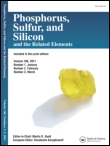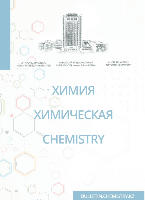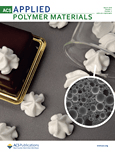
Central European Journal of Energetic Materials
Scope & Guideline
Pioneering Research in Energetic Materials
Introduction
Aims and Scopes
- Energetic Materials Science:
Research related to the physical and chemical properties of energetic materials, including new formulations and modifications to enhance performance. - Propellant Development and Analysis:
Studies focusing on the design, formulation, and testing of solid and liquid propellants for various applications, particularly in aerospace and military. - Explosive Engineering:
Investigations into the mechanisms, applications, and safety of explosives, including their performance under different conditions. - Thermodynamic and Kinetic Studies:
Research involving the thermodynamic properties and reaction kinetics of energetic materials, crucial for predicting their behavior in practical applications. - Advanced Characterization Techniques:
Utilization of advanced analytical techniques, such as spectroscopy and numerical simulations, to characterize the properties and performance of energetic materials.
Trending and Emerging
- Sustainable and Green Energetic Materials:
An increasing focus on environmentally friendly materials and processes in the development of propellants and explosives, indicating a shift towards sustainability in energetic materials. - Nanotechnology in Energetics:
Emerging studies on the use of nanomaterials to enhance the performance and safety of energetic materials, showcasing the integration of nanotechnology into traditional fields. - Computational Modeling and Simulations:
A growing trend towards using computational methods for predicting the behavior of energetic materials, which aids in the design and optimization of formulations. - Safety and Stability Studies:
Research focusing on the safety, stability, and aging of energetic materials, reflecting heightened awareness of safety issues in their handling and storage. - Advanced Propellant Technologies:
Innovative studies on new propellant technologies, such as those incorporating advanced binders and additives, to improve performance under extreme conditions.
Declining or Waning
- Traditional Gunpowder Formulations:
Research on classic gunpowder compositions has decreased, likely due to the shift towards more advanced and efficient energetic materials. - Outdated Testing Methods:
Studies exploring older methods for testing energetic materials are becoming less common as newer, more efficient techniques and standards emerge. - General Reviews without Novelty:
There is a noticeable reduction in broad review articles that do not contribute new insights or advancements, reflecting a preference for innovative and application-focused research.
Similar Journals

Chemistry of Heterocyclic Compounds
Pioneering Advances in Organic Chemistry Since 1965Chemistry of Heterocyclic Compounds, a prominent journal in the field of organic chemistry published by Springer, has been a critical resource for researchers and professionals since its inception in 1965. With its ISSN 0009-3122 and E-ISSN 1573-8353, the journal aims to disseminate cutting-edge research on heterocyclic compounds, essential for advancements in pharmaceuticals, agrochemicals, and materials science. Although categorized in the Q4 quartile of Organic Chemistry as of 2023, this journal serves as an invaluable platform for emerging research, positioning itself within the 146th rank in the Scopus database out of 211 journals, highlighting its niche yet impactful contributions. The journal emphasizes rigorous peer-review and strives to cultivate a comprehensive understanding of heterocyclic chemistry through insightful articles and reviews. While not an open-access publication, it continues to engage a global audience interested in the complexities and applications of this pivotal area of organic chemistry. Scholars and students alike will find relevance in its discourse, as it fosters an environment of knowledge exchange crucial for the continual evolution of chemical sciences.

PHOSPHORUS SULFUR AND SILICON AND THE RELATED ELEMENTS
Catalyzing Knowledge in Biochemistry and BeyondPHOSPHORUS SULFUR AND SILICON AND THE RELATED ELEMENTS, published by Taylor & Francis Ltd, is a distinguished journal dedicated to advancing knowledge in the fields of Biochemistry, Inorganic Chemistry, and Organic Chemistry. Established in 1989, the journal has carved a niche in the scientific community by offering a platform for the publication of innovative research that explores the chemistry and applications of phosphorus, sulfur, silicon, and related elements. With an ISSN of 1042-6507 and an E-ISSN of 1563-5325, this journal provides access to valuable insights, albeit without open access options. Despite being positioned in the fourth quartile of its categories (Q4), it remains an essential resource for researchers, professionals, and students seeking to expand their understanding of these pivotal elements and their interactions. With a publishing horizon extending to 2024, the journal invites contributions aimed at pushing the boundaries of chemistry and fostering interdisciplinary dialogue.

DOKLADY PHYSICAL CHEMISTRY
Bridging Theory and Practice in Chemistry ResearchDOKLADY PHYSICAL CHEMISTRY is a prominent peer-reviewed journal published by MAIK NAUKA/INTERPERIODICA/SPRINGER, focusing on advancements and research in the field of Physical and Theoretical Chemistry. With the ISSN 0012-5016 and E-ISSN 1608-3121, this journal serves as a vital platform for researchers and practitioners to disseminate their findings and insights from 1996 to the present. Despite its current Q4 ranking in the 2023 category of Physical and Theoretical Chemistry, the journal has shown significant potential for visibility and engagement within the academic community, ranking #149 out of 189 in its respective field according to Scopus metrics, highlighting its dedicated readership. While the journal is not open access, it remains an essential resource for those seeking in-depth research articles, reviews, and commentary within this dynamic discipline. As the field continues to evolve, DOKLADY PHYSICAL CHEMISTRY plays a crucial role in fostering scientific dialogue and collaboration among researchers, professionals, and students worldwide.

ACS Physical Chemistry Au
Pioneering discoveries in physical chemistry and beyond.ACS Physical Chemistry Au, published by the American Chemical Society, is a pioneering open-access journal that provides a dynamic platform for researchers and professionals in the field of physical chemistry and its interdisciplinary connections. Since its inception in 2021, the journal has made significant strides in disseminating high-quality research, evidenced by its impressive standings in various categories, including Q1 rankings in Chemistry (miscellaneous), Computational Theory and Mathematics, and Physical and Theoretical Chemistry as of 2023. With a commitment to enhancing the visibility and accessibility of scholarly work, ACS Physical Chemistry Au offers a robust Open Access model, ensuring that groundbreaking research is freely available to a global audience. The journal serves as an essential resource for researchers, students, and practitioners seeking to advance knowledge in computational theory, physical chemistry, and their applied sciences. With an ISSN of N/A and an E-ISSN of 2694-2445, the journal is poised to make a lasting impact in the academic community.

Russian Journal of Physical Chemistry A
Exploring the Frontiers of Physical ChemistryWelcome to the Russian Journal of Physical Chemistry A, a prominent publication in the field of Physical and Theoretical Chemistry, published by MAIK NAUKA/INTERPERIODICA/SPRINGER. This journal, with ISSN 0036-0244 and E-ISSN 1531-863X, has been a vital platform for disseminating significant research findings since its inception in 1996. As a key contributor to academic discourse, it aims to provide high-quality articles that explore fundamental and applied aspects of physical chemistry, thereby enhancing understanding and innovation in the discipline. Although currently categorized as Q4 by Scopus (2023), the journal is positioned to evolve with the scholarly landscape, continually striving to improve its impact and relevance. With no open access options available, subscription to this journal is essential for those keen on enriching their knowledge and staying current with advancements in physical chemistry. Researchers, professionals, and students alike will find invaluable insights and robust discussions that can inspire their work and studies.

Chemical Bulletin of Kazakh National University
Bridging Discoveries: Chemistry for a Global CommunityThe Chemical Bulletin of Kazakh National University is a prominent open-access journal dedicated to advancing the field of chemistry. Published by AL-FARABI KAZAKH NATIONAL UNIVERSITY, this journal serves as a vital platform for disseminating original research, reviews, and innovative findings in diverse areas of chemistry since its transition to open access in 2012. With an ISSN of 1563-0331 and an E-ISSN of 2312-7554, the journal aims to reach a global audience, fostering knowledge exchange among researchers, professionals, and students in the scientific community. The publication seeks to promote high-quality research that contributes to the understanding and application of chemical sciences, particularly in the context of Kazakhstan and the broader Central Asian region. Given the journal's commitment to making research freely accessible, it stands as an invaluable resource for anyone engaged in the study and application of chemistry.

RUSSIAN JOURNAL OF INORGANIC CHEMISTRY
Bridging Disciplines in Inorganic and Materials ScienceThe Russian Journal of Inorganic Chemistry is a distinguished publication that delves into the fundamental and applied aspects of inorganic chemistry. Published by MAIK Nauka/Interperiodica/Springer, this journal has established itself as a vital resource for researchers, professionals, and students alike, contributing significantly to the fields of Inorganic Chemistry, Materials Science, and Physical and Theoretical Chemistry. With an ISSN of 0036-0236 and an E-ISSN of 1531-8613, the journal is indexed for easy access and citation. Though the journal currently operates under a subscription model, its commitment to disseminating high-quality research and fostering scientific discourse remains steadfast. The journal has been maintaining a consistent record since its inception, and its positioning in the Q3 quartile across various chemistry categories in 2023 underscores its relevance in the academic community. As it continues through its converged years from 1996 to 2024, the Russian Journal of Inorganic Chemistry plays a pivotal role in enhancing the understanding and advancement of inorganic chemistry, making it an indispensable tool for anyone engaged in this dynamic field.

Physical Chemistry Research
Fostering collaboration for groundbreaking discoveries in chemistry.Physical Chemistry Research, published by the Iranian Chemical Society, is an esteemed academic journal dedicated to advancing knowledge within the fields of *Fluid Flow and Transfer Processes*, *Physical and Theoretical Chemistry*, and *Statistical and Nonlinear Physics*. Since its inception in 2013, the journal has established a crucial platform for researchers, professionals, and students to share innovative findings and methodologies, enhancing collaboration and knowledge dissemination in the physical chemistry community. With impactful contributions recognized in Quartile 3 and Quartile 4 classifications across various categories, the journal is positioned to cultivate emerging research trends as it continues to converge through 2024. Researchers can benefit from diverse perspectives on crucial phenomena in physical chemistry, as the journal is indexed in prominent databases, further increasing accessibility and visibility. The *open access* policy ensures that cutting-edge research remains available to a broad audience, promoting the growth of the discipline globally.

ACS Applied Polymer Materials
Advancing the Future of Polymer ScienceACS Applied Polymer Materials is a prestigious journal published by the American Chemical Society, specifically tailored for the dynamic fields of Organic Chemistry, Polymers and Plastics, and Process Chemistry and Technology. With its ISSN 2637-6105, the journal has rapidly established itself within the academic community, achieving a distinguished Q1 quartile ranking across multiple categories in 2023. This places it among the top-tier journals globally, reinforcing its critical role in disseminating groundbreaking research and innovation in polymer science. The journal is known for its rigorous peer-review process and publishes high-quality articles that are pivotal for researchers, professionals, and students eager to advance knowledge in polymer materials and their applications. Positioned to cover converging themes from 2019 through 2024, ACS Applied Polymer Materials embraces a wide scope of studies, from fundamental chemistry to practical engineering applications, thereby fostering significant advancements in material science. While it offers traditional access options, the journal's impact is reflected in its impressive rankings within Scopus, indicating its relevance and influence in the chemical engineering domain. Join the global community of innovators and discover the latest insights that continue to shape the landscape of applied polymer research.

International Journal of Energetic Materials and Chemical Propulsion
Unleashing the Power of Propulsion Science and Material Advancements.The International Journal of Energetic Materials and Chemical Propulsion, launched in 2009 by BEGELL HOUSE INC, serves as a pivotal platform in the interdisciplinary field of energetic materials and propulsion technologies. With an ISSN of 2150-766X and an E-ISSN of 2150-7678, this journal engages a diverse audience of researchers, professionals, and students interested in the advancements of materials science, particularly in relation to energetic materials. Despite its designation in the Q4 category for Materials Science in the 2023 ranking, the journal’s commitment to disseminating innovative research positions it as an essential resource for those exploring the potential and applications of chemical propulsion systems. Researchers can look forward to publishing and accessing a variety of studies aimed at improving safety and performance in this critical area of research. Although no Open Access options are currently available, the journal maintains a high standard of peer-reviewed content to ensure the integrity and relevance of its contributions to the field.